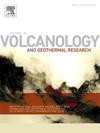Comprehensive orientation method using cross-line laser: A case study of paleomagnetic analysis on pyroclastic deposits from Asama Volcano (Japan)
IF 2.4
3区 地球科学
Q2 GEOSCIENCES, MULTIDISCIPLINARY
Journal of Volcanology and Geothermal Research
Pub Date : 2025-02-13
DOI:10.1016/j.jvolgeores.2025.108293
引用次数: 0
Abstract
Accurate orientation of terrestrial materials is essential in earth sciences, particularly in structural geology and paleomagnetic studies. In this study, we present a novel and versatile sample orientation method utilizing commercially available cross-line lasers. This method address challenges in collecting oriented geological samples caused by factors such as sample size, fragility, rough surfaces, and local magnetic anomalies that complicate the use of magnetic compasses. To evaluate the effectiveness of this method, paleomagnetic measurements were performed on juvenile clasts from pyroclastic density current deposits and the pyroclastic fall deposit of the 1783 eruption of Asama Volcano. The result coincides within error limits with the geomagnetic field predicted by a paleosecular variation curve, demonstrating the potential of our orienting method. However, further experiments are required to quantify the precision of our orienting method and to assess its dependence on factors such as clast size and shape. Preliminary paleomagnetic analyses of the pyroclastic fall deposit suggest a complex emplacement history and indicate a surprisingly high-temperature emplacement. These findings offer new insights into the emplacement processes and thermal history of pyroclastic deposits. This innovative method enhances the capability to collect and analyze oriented geological samples, providing significant contributions to volcanological and structural geological research.

交叉线激光综合定向方法——以日本浅间火山火山碎屑沉积古地磁分析为例
陆地物质的精确定位在地球科学,特别是构造地质学和古地磁研究中是必不可少的。在这项研究中,我们提出了一种新的和通用的样品定向方法,利用市售的交叉线激光器。该方法解决了由于样品大小、易碎性、粗糙表面和局部磁异常等因素导致的定向地质样品收集挑战,这些因素使磁罗盘的使用复杂化。为了评价该方法的有效性,对1783年浅间火山喷发的火山碎屑密度流沉积和火山碎屑落落沉积的幼期碎屑进行了古地磁测量。结果与古长期变化曲线预测的地磁场在误差范围内吻合,显示了定向方法的潜力。然而,需要进一步的实验来量化我们的定向方法的精度,并评估其对诸如碎屑大小和形状等因素的依赖。火山碎屑沉积的初步古地磁分析表明其就位历史复杂,并显示出惊人的高温就位。这些发现为火山碎屑沉积的侵位过程和热历史提供了新的认识。这种创新方法提高了定向地质样品的收集和分析能力,为火山学和构造地质学研究提供了重要贡献。
本文章由计算机程序翻译,如有差异,请以英文原文为准。
求助全文
约1分钟内获得全文
求助全文
来源期刊
CiteScore
5.90
自引率
13.80%
发文量
183
审稿时长
19.7 weeks
期刊介绍:
An international research journal with focus on volcanic and geothermal processes and their impact on the environment and society.
Submission of papers covering the following aspects of volcanology and geothermal research are encouraged:
(1) Geological aspects of volcanic systems: volcano stratigraphy, structure and tectonic influence; eruptive history; evolution of volcanic landforms; eruption style and progress; dispersal patterns of lava and ash; analysis of real-time eruption observations.
(2) Geochemical and petrological aspects of volcanic rocks: magma genesis and evolution; crystallization; volatile compositions, solubility, and degassing; volcanic petrography and textural analysis.
(3) Hydrology, geochemistry and measurement of volcanic and hydrothermal fluids: volcanic gas emissions; fumaroles and springs; crater lakes; hydrothermal mineralization.
(4) Geophysical aspects of volcanic systems: physical properties of volcanic rocks and magmas; heat flow studies; volcano seismology, geodesy and remote sensing.
(5) Computational modeling and experimental simulation of magmatic and hydrothermal processes: eruption dynamics; magma transport and storage; plume dynamics and ash dispersal; lava flow dynamics; hydrothermal fluid flow; thermodynamics of aqueous fluids and melts.
(6) Volcano hazard and risk research: hazard zonation methodology, development of forecasting tools; assessment techniques for vulnerability and impact.

 求助内容:
求助内容: 应助结果提醒方式:
应助结果提醒方式:


